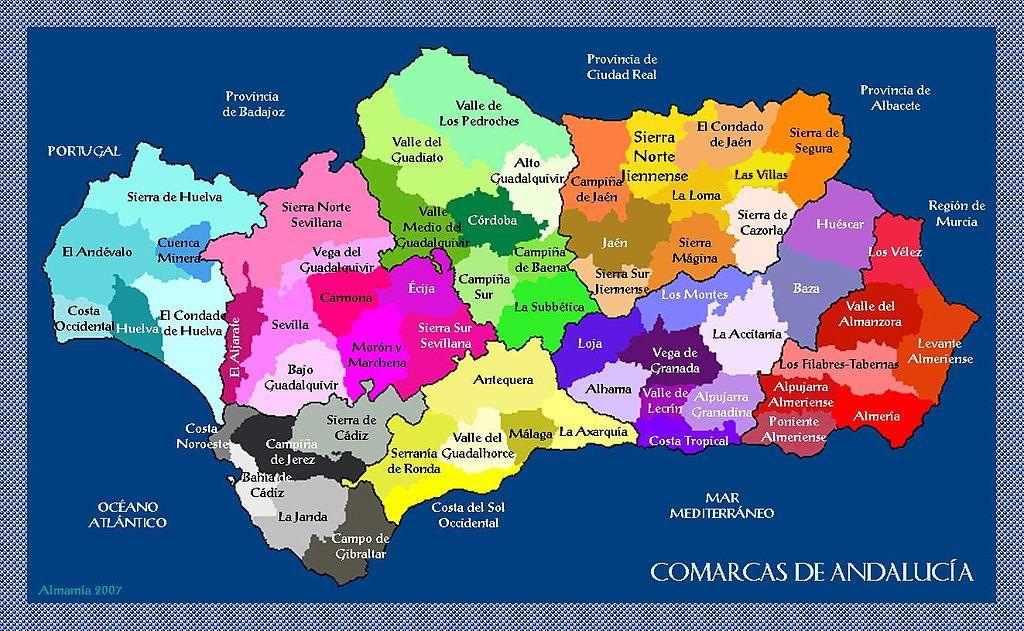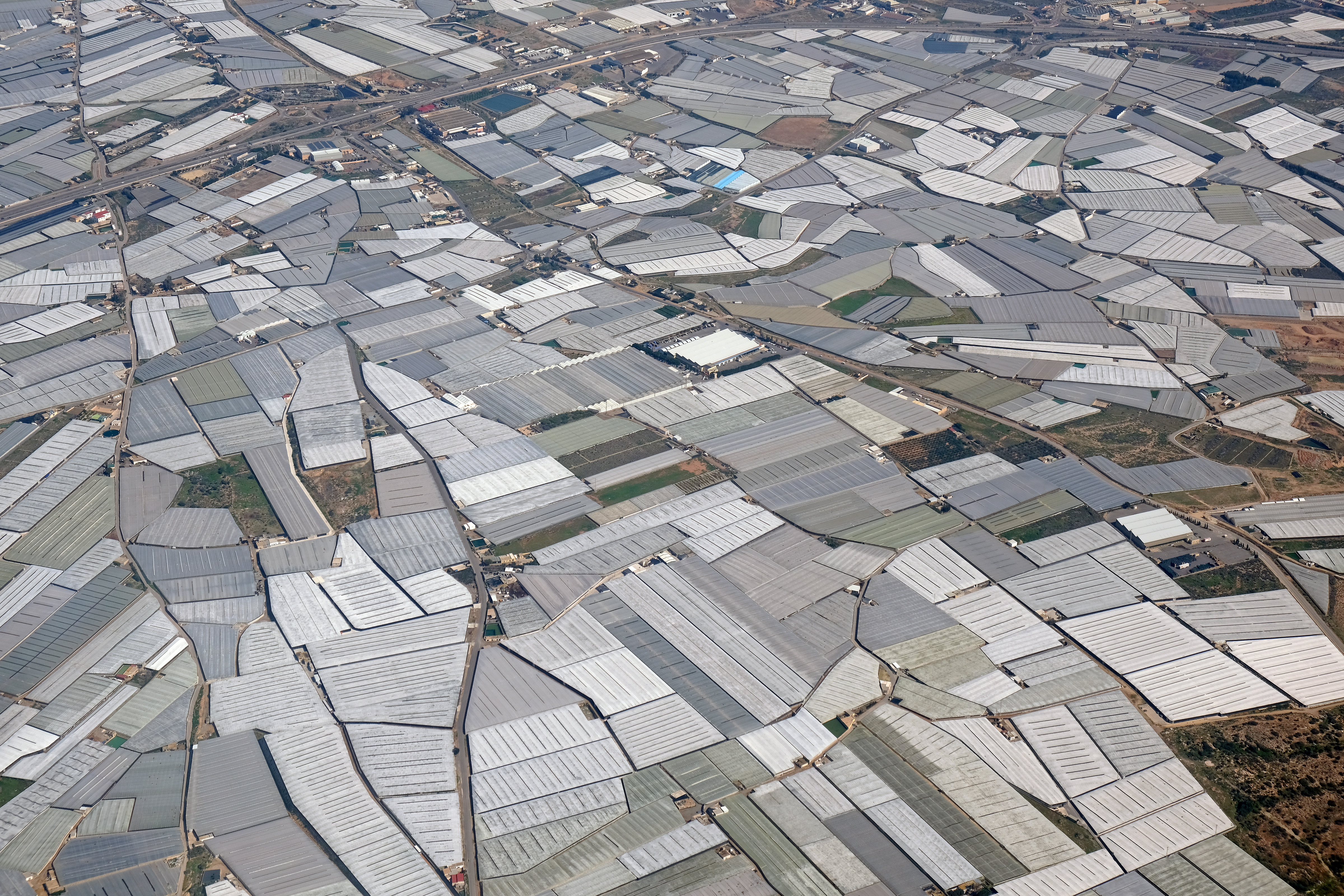|
Poniente Almeriense
Poniente Almeriense is a ''comarca'' in Almería, Spain. It is sometimes also known as the "sea of plastic" (''Mar de plástico'') due to the numerous greenhouses that cover the area. The ''comarca'' contains ten municipalities (the tenth, Balanegra, was created in 2015 from part of Berja municipality) and 259,357 inhabitants in an area of 971 km2. The "sea of plastic" was one of the subjects of '' We feed the world'', a 2005 documentary; and the setting of Spanish crime drama ''Mar de plástico''. The typical agricultural products of the greenhouses are: cucumbers, watermelons, eggplants, zucchinis, peaches, peppers and tomatoes. The ''comarca'' borders the Alboran Sea to the South, the city of Almería to the east, the Sierra de Gádor to the north, and the municipality of Albuñol (in Granada province) to the west. Municipalities The ''Poniente Almeriense'' contains the following ten municipalities A municipality is usually a single administrative division having ... [...More Info...] [...Related Items...] OR: [Wikipedia] [Google] [Baidu] |
Comarcas Of Andalusia
In Andalusia, comarcas have no defined administrative powers; many municipalities have gathered together to form ''mancomunidades'' in order to provide basic services, but those do not always coincide with the traditional ''comarcas''. The current (2007) Statute of Autonomy of Andalusia, unlike its 1981 predecessor, allows for the establishment and regulation of official ''comarcas'' under its Title III, Article 97, which defines the significance of ''comarcas'' and sets the basis for future legislation in this area. In 2003, the Council of Tourism and Sports of the Regional Government of Andalusia The Regional Government of Andalusia ( es, Junta de Andalucía) is the government of the Autonomous Community of Andalusia. It consists of the Parliament, the President of the Regional Government and the Government Council. The 2011 budget was 31. ... published an order in which it defined the ''comarca'' as "a geographic space with some homogeneous natural characteristicas, which prod ... [...More Info...] [...Related Items...] OR: [Wikipedia] [Google] [Baidu] |
Vícar
Vícar is a municipality of Almería province, in the autonomous community of Andalusia Andalusia (, ; es, Andalucía ) is the southernmost Autonomous communities of Spain, autonomous community in Peninsular Spain. It is the most populous and the second-largest autonomous community in the country. It is officially recognised as a ..., Spain. Demographics References External links *Vícar- Sistema de Información Multiterritorial de Andalucía *- Diputación Provincial de Almería Municipalities in the Province of Almería {{Almería-geo-stub ... [...More Info...] [...Related Items...] OR: [Wikipedia] [Google] [Baidu] |
Albuñol
Albuñol is a city located in the province of Granada, Spain. According to the 2007 census A census is the procedure of systematically acquiring, recording and calculating information about the members of a given population. This term is used mostly in connection with national population and housing censuses; other common censuses in ..., the city has a population of 6,270 inhabitants. History It is believed that its origin is Roman, but remains have been found of a prehistoric settlement in the Cave of Bats, located in the municipality of Albuñol. The heyday of the Alpujarra was the Moors, at the time Albuñol contained the largest population of Great Cehel or Gran Costa. It was in these centuries Albuñol was defended by the castle of La Rábita. In the sixteenth century Portocarrero Luis Zapata bought the population to the Crown, Dona Juana, also receiving the award of city status. After the expulsion of the Moors in 1570 began the repopulation of the Alpujarra with C ... [...More Info...] [...Related Items...] OR: [Wikipedia] [Google] [Baidu] |
Sierra De Gádor
Sierra de Gádor of Sierra Gador is a mountain range in southwest of the province of Almería, Spain.Sierra Gador Rafael María Navarro Cerrillo, Carlos Carreras Egaña Los territorios del agua: la Sierra de Gádor In: Oyonarte et al. (eds.) ''Sierra de Gádor, patrimonio Natural e infraestructura verde de Almería'', pp. 407-419 It is bordered to the north by and to the south by the |
Almería
Almería (, , ) is a city and municipality of Spain, located in Andalusia. It is the capital of the province of the same name. It lies on southeastern Iberia on the Mediterranean Sea. Caliph Abd al-Rahman III founded the city in 955. The city grew wealthy during the Islamic era, becoming a world city throughout the 11th and 12th centuries. It enjoyed an active port that traded silk, oil and raisins. Etymology The name "Almería" comes from the city's former Arabic name, ''Madīnat al-Mariyya'', meaning "city of the watchtower". As the settlement was originally port or coastal suburb of Pechina, it was initially known as ''Mariyyat al-Bajjāna'' (''Bajjāna'' being the Arabic name for Pechina). History The origin of Almería is connected to the 9th-century establishment of the so-called Republic of Pechina (Bajjana) some kilometres to the north, which was for a time autonomous from the Cordobese central authority: the settlement of current-day Almería initially developed as ... [...More Info...] [...Related Items...] OR: [Wikipedia] [Google] [Baidu] |
Alboran Sea
The Alboran Sea (from Arabic , ''al-Baḥrān'') is the westernmost portion of the Mediterranean Sea, lying between the Iberian Peninsula and the north of Africa (Spain on the north and Morocco and Algeria on the south). The Strait of Gibraltar, which lies at the west end of the Alboran Sea, connects the Mediterranean with the Atlantic Ocean. Geography Its average depth is and maximum depth is . The International Hydrographic Organization defines the limits of the Alboran Sea as follows: ''On the West.'' The Eastern limit of the Strait of Gibraltar: A line joining from tip (Europa Point) of '' Cap Gibraltar'' in Europe to the tip of the ''Península de Almina'' of Ceuta in Africa (). ''On the East.'' A line joining from '' Cabo de Gata'' in Andalusia in Europe to ''Cap Fegalo'', near Oran, Algeria in Africa (). Several small islands dot the sea, including the eponymous Isla de Alborán. Most, even those close to the African shore, belong to Spain. Geology The Alboran domain ... [...More Info...] [...Related Items...] OR: [Wikipedia] [Google] [Baidu] |
Mar De Plástico
''Mar de plástico'' ( en, Plastic Sea) is a Spanish crime drama television series produced by Boomerang TV for Atresmedia. It airs on Atresmedia's main channel Antena 3. The series focuses on the investigation of a murder in the fictional town of Campoamargo, set in an area of the province of Almería known as the "plastic sea" due to the numerous greenhouses that cover it, and the interracial conflicts that arise in the greenhouses. The pilot episode aired on 22 September 2015, being simulcast on Antena 3, Neox, Nova and Mega. In November 2015, Antena 3 announced that the series had been renewed for a second season, which was later confirmed as the last one. Plot Season 1 On a hot night in Campoamargo, Almería, Ainhoa Sánchez (Mara López), daughter of the town's mayor, heads to a date in the greenhouse area, known as the "Plastic Sea". Suddenly there is a power outage and Ainhoa is brutally attacked and killed in the dark. The next morning, the crops are watered by her bl ... [...More Info...] [...Related Items...] OR: [Wikipedia] [Google] [Baidu] |
Intensive Farming In Almería
The intensive agriculture of the province of Almeria, Spain, is a model of agricultural exploitation of high technical and economic yield based on the rational use of water, use of plastic greenhouses, high technical training and high level of employment of inputs, on the peculiar characteristics of the environment. The greenhouses (invernaderos) are located between Motril and Almeria.Andalusie: Sevilla, Malaga, Cordoba by Phillipe Gloagguen, Sabine van Humbeeck Especially the area of El Ejido is well known to be an agricultural hotspot. History The first greenhouse was built in 1963 and the technique was extended by the ''Campo de Dalías'' or ''Poniente Almeriense'' and later by the ''Campo de Níjar'', in the east. The use of polyethylene as a substitute for glass had already been tested in the Canary Islands and Catalonia before. The plastic was spread over wooden posts or metal structures and secured by wire. The transparent plastic intensifies the heat and maintains the h ... [...More Info...] [...Related Items...] OR: [Wikipedia] [Google] [Baidu] |
Greenhouse
A greenhouse (also called a glasshouse, or, if with sufficient heating, a hothouse) is a structure with walls and roof made chiefly of Transparent ceramics, transparent material, such as glass, in which plants requiring regulated climatic conditions are grown.These structures range in size from small sheds to industrial-sized buildings. A miniature greenhouse is known as a cold frame. The interior of a greenhouse exposed to sunlight becomes significantly warmer than the external temperature, protecting its contents in cold weather. Many commercial glass greenhouses or hothouses are high tech production facilities for vegetables, flowers or fruits. The glass greenhouses are filled with equipment including screening installations, heating, cooling, and lighting, and may be controlled by a computer to optimize conditions for plant growth. Different techniques are then used to manage growing conditions, including air temperature, relative humidity and vapour-pressure deficit, in ord ... [...More Info...] [...Related Items...] OR: [Wikipedia] [Google] [Baidu] |
Telephone Numbers In Spain
The Spanish telephone numbering plan is the allocation of telephone numbers in Spain. It was previously regulated by the Comisión del Mercado de las Telecomunicaciones (CMT), but is now regulated by the Comisión Nacional de los Mercados y la Competencia (CNMC). History Before 1998, local telephone calls could be made using only the subscriber's number without the area code, while the trunk code '9' was omitted when calling from outside Spain, e.g.: xx xx xx (within the same province) 9xx xxx xxx (within Spain) +34 xx xxx xxx (outside Spain) International calls were made by dialling the international access code 07, waiting for a tone, and then dialling the country code. [...More Info...] [...Related Items...] OR: [Wikipedia] [Google] [Baidu] |
List Of Postal Codes In Spain
Spanish postal codes were introduced on 1 July 1984, when the introduced automated mail sorting. They consist of five numerical digits, where the first two digits, ranging 01 to 52, correspond either to one of the 50 provinces of Spain or to one of the two autonomous cities on the African coast. Two-digit prefixes The first two digits of a Spanish postal code identify the province or autonomous city it belongs to. The numbers were assigned to the 50 provinces of Spain ordered alphabetically at the time of implementation. The official names of some of the provinces have since changed, either to the regional language version of the name (e.g. from the Spanish to the Basque ) or to adopt the name of the autonomous community instead of the provincial capital (e.g. Santander to Cantabria). In these cases, the originally assigned code has been maintained, resulting in some exceptions to the alphabetical order. In addition, Ceuta and Melilla were originally included within the ... [...More Info...] [...Related Items...] OR: [Wikipedia] [Google] [Baidu] |


.jpg)




